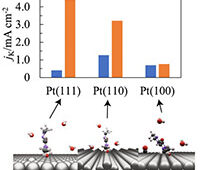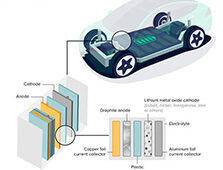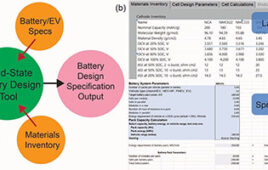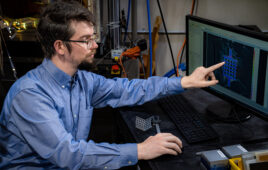Based on deposited polystyrene-based polymer technology, the soft, foldable fabric can, when charged by two metal plates, store charge at 0.2 farads per square centimeter. |
A team from the National University of Singapore’s Nanoscience and Nanotechnology Initiative (NUSNNI), led by principle investigator Dr Xie Xian Ning, has developed the world’s first energy-storage membrane.
Electrical energy storage and its management is becoming an urgent issue due to climate change and energy shortage. Existing technologies such as rechargeable batteries and supercapacitors are based on complicated configurations including liquid electrolytes, and suffer from difficulties in scaling-up and high fabrication costs. There is also growing public concern and awareness of the impact of traditional energy sources on the environment, spurring a continued search for alternative, green, sustainable energy sources.
Recognizing the issue, Xie and his team have developed a membrane that not only promises greater cost-effectiveness in delivering energy, but also an environmentally-friendly solution. The researchers used a polystyrene-based polymer to deposit the soft, foldable membrane that, when sandwiched between and charged by two metal plates, could store charge at 0.2 farads per square centimeter. This is well above the typical upper limit of 1 microfarad per square centimetre for a standard capacitor.
The cost involved in energy storage is also drastically reduced. With existing technologies based on liquid electrolytes, it costs about US$7 to store each farad. With the advanced energy storage membrane, the cost to store each farad falls to an impressive US$0.62. This translates to an energy cost of 10-20 W-hr per US dollar for the membrane, as compared to just 2.5 W-hr per US dollar for lithium ion batteries.
“Compared to rechargeable batteries and supercapacitors, the proprietary membrane allows for very simple device configuration and low fabrication cost. Moreover, the performance of the membrane surpasses those of rechargeable batteries, such as lithium ion and lead-acid batteries, and supercapacitors,” says Xie.
The research is supported by grants from the Singapore-MIT Alliance for Research & Technology (SMART), and National Research Foundation. Dr Xie and his team started work on the membrane early last year and took about 1.5 years to reach their current status, and have successfully filed a US patent for this novel invention.
The discovery has also gained the attention of scientific journals worldwide, and was featured in Energy & Environmental Science and highlighted by the journal Nature.
The membrane could be used in hybrid vehicles for instant power storage and delivery, thus improving energy efficiency and reducing carbon emission. Potentially, hybrid cars with the membrane technology could be powered by the energy stored in the membranes in conjunction with the energy provided by fuel combustion, increasing the lifespan of car batteries and cutting down on waste.
The membrane could also be integrated into solar panels and wind turbines to store and manage the electricity generated. Energy provided through these sources is prone to instability due to their dependence on natural factors. By augmenting these energy sources with the membrane, the issue of instability could potentially be negated, as surplus energy generated can be instantly stored in the membranes, and delivered for use at a stable rate at times when natural factors are insufficient, such as a lack of solar power during night-time.
The research team has demonstrated the membrane’s superior performance in energy storage using prototype devices. The team is currently exploring opportunities to work with venture capitalists to commercialise the membrane. To date, several venture capitalists have expressed strong interest in the technology.
“With the advent of our novel membrane, energy storage technology will be more accessible, affordable, and producible on a large scale. It is also environmentally-friendly and could change the current status of energy technology,” Dr Xie said.
SOURCE: National University of Singapore





